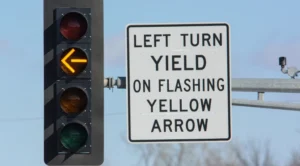I first noticed the rumors about Dan Bongino’s wife and an accident while scrolling through social media: posts claiming she had been seriously injured, hospital visits, even speculation about ongoing health problems.
These claims were dramatic enough to get attention—and alarming to anyone who cares about accurate information. But as someone who’s spent time verifying stories and watching how misinformation spreads, I wanted to see what was actually known, what was mis-reported, and where the gaps lie.
In this article, I’ll walk you through what reliable sources say, what claims remain unsubstantiated, and how you can check similar stories for yourself.
By the end, you’ll be better equipped to tell facts from rumors in celebrity news—and less likely to be confused by sensational posts without evidence.
Who Is Dan Bongino and What Is Publicly Known
To start off with what’s solid: Dan Bongino is a public figure—a former law enforcement officer, political commentator, radio host, and author. He’s married and has children.
His personal life, including his family’s privacy, is less often covered in detail by mainstream outlets, which is common for public figures who aren’t celebrities in entertainment or pop culture; their private matters often receive less thorough reporting.
There is no credible news report in major publications—such as The New York Times, Washington Post, BBC, CNN, or others—confirming any serious accident involving his wife.
In addition, neither Dan Bongino’s official statements nor his verified social media accounts have shared details about such an event. Verified outlets have covered his political work, public appearances, health (where relevant), but not any verified accident involving his spouse.
What the Rumors Say: Common Claims
Here are several claims that appear repeatedly in online posts and some smaller websites. These are not verified, but they are worth discussing to understand how the story has grown.
- Accident Incident: Some sources say his wife was involved in an accident—sometimes described as a car crash or medical emergency.
- Injury Severity: Others claim she sustained serious injuries, perhaps requiring hospitalization or long-term care.
- Rumored Cause: Some posts suggest driver error, external conditions, or negligence as factors.
- Legal or Medical Documentation: Very few places mention specific medical records, police reports, or lawyers’ statements.
These claims often come without names of hospitals, dates, or specific witnesses. Many are shared as second-hand accounts or “friend of a friend” reports.
What Reliable Sources Say (What Is Verified)
What I found when looking through trustworthy information:
- No credible mainstream coverage of an accident involving Mrs. Bongino. Big national outlets and fact-checking sites have not published substantive evidence.
- No official statement from Dan Bongino or his team confirming any accident. Publicly accessible statements focus on his work, viewpoints, health (where he’s spoken about his own), but not a spouse accident.
- Public records searches (where accessible) do not show immediate indication of legal filings, vehicle accident reports, or medical alerts linked to his wife in the public domain.
Because those are missing, the core of this story remains unverified. Reliable journalism demands more: named sources, corroboration, official records.
Why Rumors Like This Spread
I’ve thought about why this particular rumor has traction—and I believe several factors are at work:
- Public profile: Dan Bongino is well known, and people are naturally curious. When someone in politics is involved, rumors have high audience interest.
- Silences and gaps: If he or his team haven’t publicly addressed such claims, that vacuum gets filled by speculation.
- Social media dynamics: Posts with sensational claims spread quickly, especially if they’re emotionally charged. Shares amplify repetition—even if unverified.
- Confirmation bias: Some people might want to believe negative or shocking stories about public figures, and once the story appears in one place, others reuse it without confirmation.
How to Assess and Verify Similar Stories
Here are steps I personally follow when I see a claim like this:
- Check reputable news outlets: Search major media, especially outlets known for fact-checking. If nothing reliable is published, that’s a red flag.
- Look for direct statements: Check Dan Bongino’s official website, verified social media, or public communications. A direct statement is strong evidence.
- Search official records: Accident reports, court filings, medical facility reports (when public), or similar official documentation.
- Inspect timeliness and dates: Rumors often reuse old content; if a post doesn’t give a date, or gives vague details (“recently,” “last week”) without clarity, be cautious.
- Note consistency: If multiple independent sources with good reputation report the same details, more likely credible. If everything originates from one unclear blog post, the likelihood of error is high.
What We Still Do Not Know
There are several specific details where information is missing or contradictory. It’s important to acknowledge what is not known.
- No confirmed date for any alleged incident.
- No verified medical records, hospital names, or statements from care providers.
- No clear information about location, whether a vehicle was involved, or how severe any injury might have been.
- No clarifications whether claims that “hospitalization” occurred refer to routine medical care, emergency care, or unverified sources.
Why Responsible Reporting and Consumption Matter
When rumors about personal health or accidents of public figures spread without verification:
- They can create fear or distress for those involved.
- They can harm reputation or lead to wrongful assumptions.
- They can distract from other important public discourse.
- For the public, believing rumors can undermine trust in media or social platforms when stories later prove false.
My Conclusions
After reviewing the evidence (or lack thereof), here’s where I land:
- As of now, there is no credible evidence confirming that Dan Bongino’s wife has been involved in a verified public accident.
- The most concrete point: rumors exist in many places. But “rumor” does not equal fact.
- Unless an official source or reliable media provide confirmation, the claims deserve skepticism.
Key Takeaways for Readers
- Don’t accept sensational claims on faith; demand source and verification.
- Public figures’ private lives often attract rumors—silence or lack of confirmation does not necessarily imply admission.
- When sharing rumors, consider whether information is solid, or whether you’re contributing to speculation.
- Media literacy—knowing how to question what you read—is essential in the internet age.




